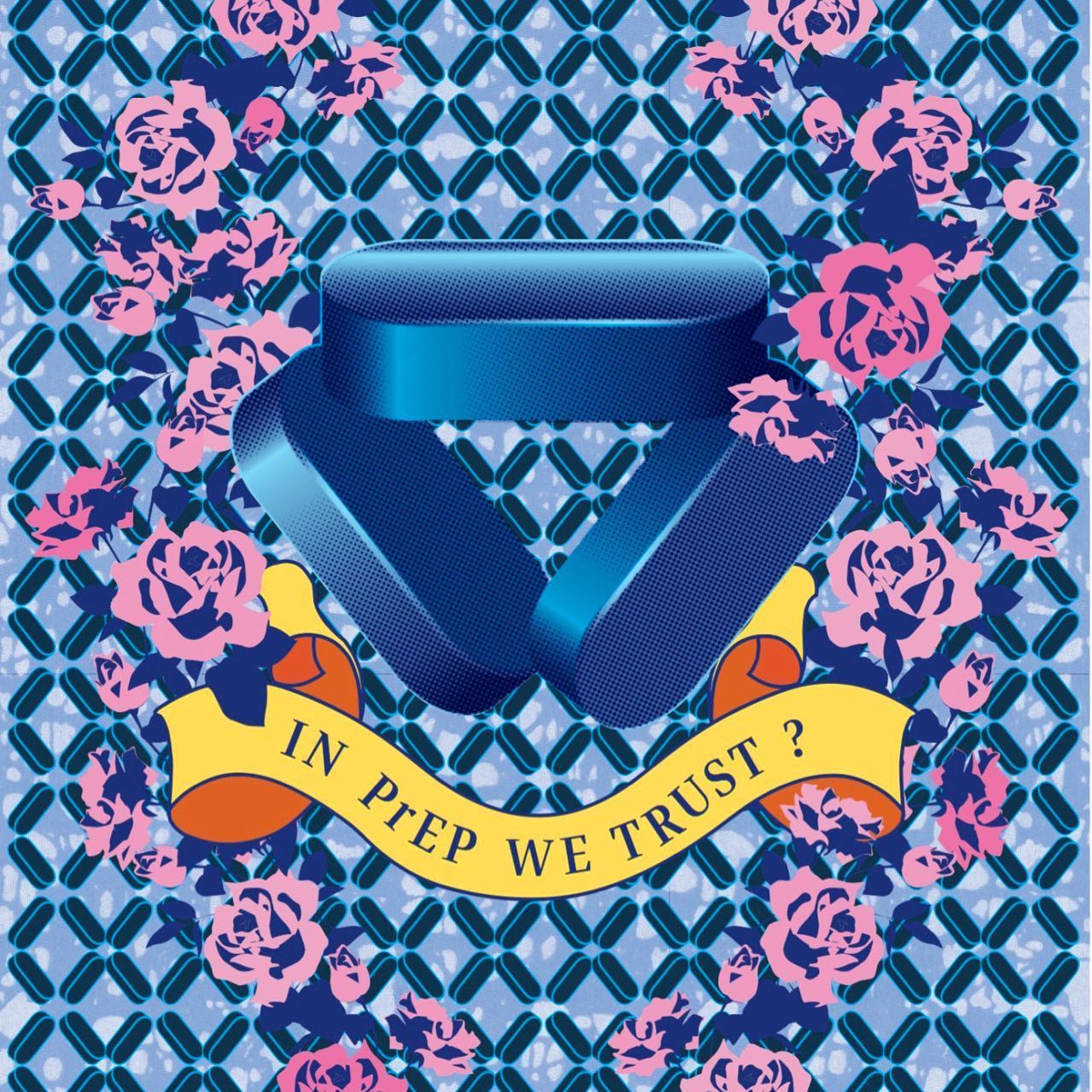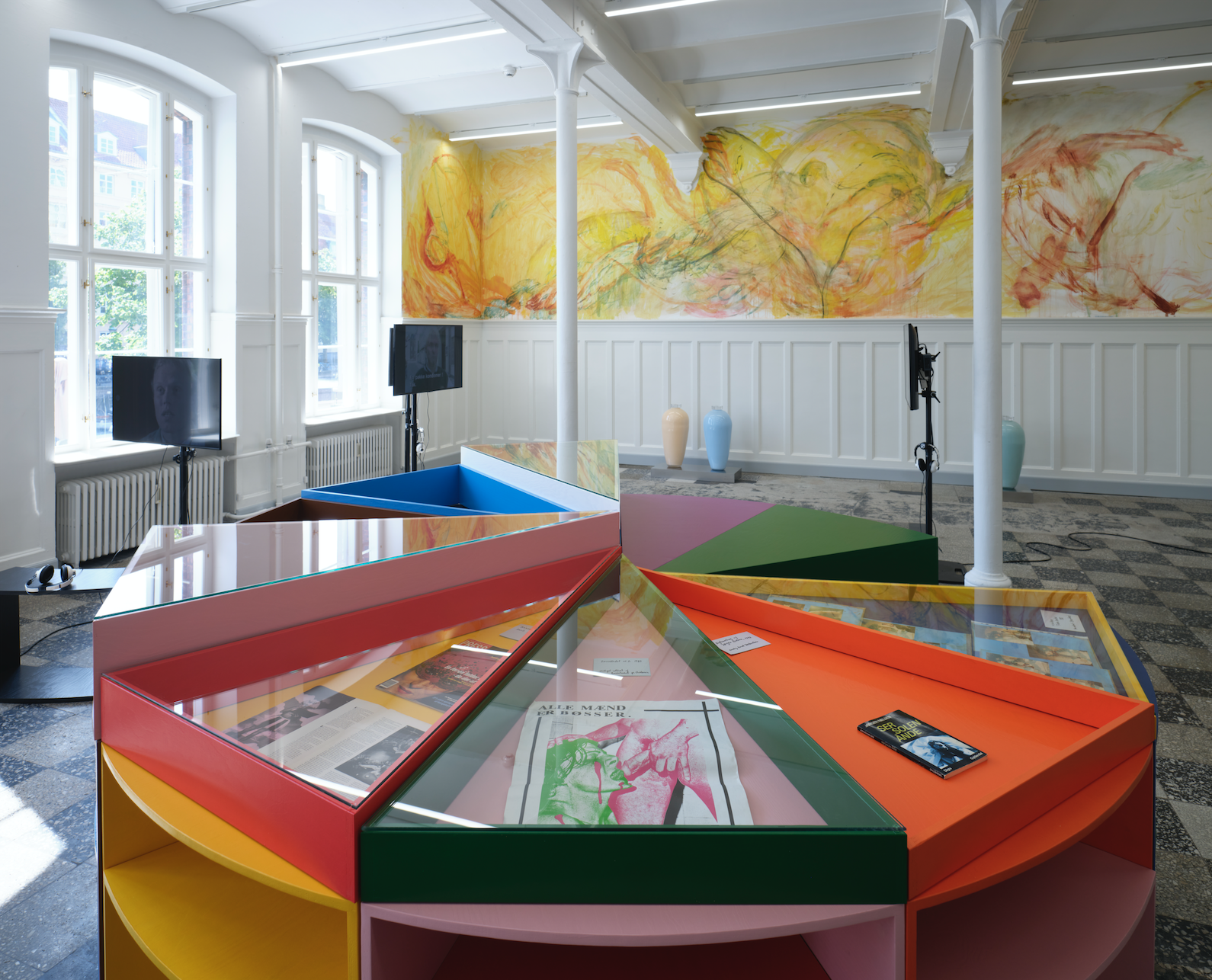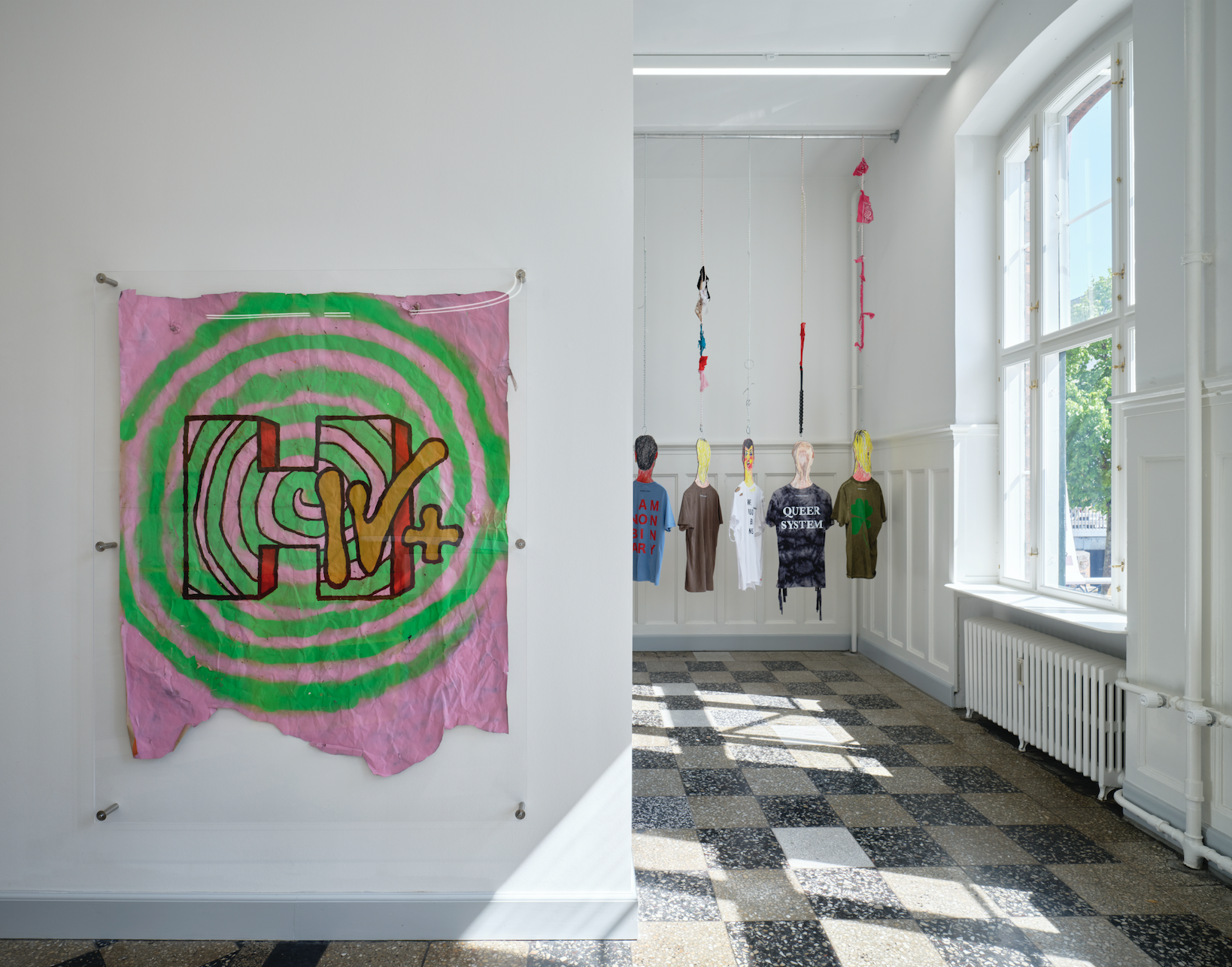“All men are gay,” reads the cover of a newspaper from Bøssehuset (The Gay House). The newspaper is part of the exhibition Psychopathia Sexualis at the art space Overgaden in Copenhagen, which displays a combination of archival material and contemporary art—the former taking center stage in a round, colorful display case and on freestanding flat screen TVs. An abstract mural covers the gallery walls alongside artworks thematically revolving around IVF, HIV and the HIV prevention drug PrEP. In 1981, homosexuality was officially removed from the list of mental disorders in Denmark. It was also the year that the US Center for Disease Control (CDC) published an article on a disease detected in Los Angeles that would later come to be known as AIDS. From one kind of pathologization to another.
 Installation view, “Alle mænd er bøsser” (All men are gay) in the front display case, Psychopathia Sexualis, O – Overgaden. Photo: Anders Sune Berg
Installation view, “Alle mænd er bøsser” (All men are gay) in the front display case, Psychopathia Sexualis, O – Overgaden. Photo: Anders Sune Berg
Whether the focus is the psycho pathologization of queer people, the HIV/AIDS pandemic, or the intersection of the two, Psychopathia Sexualis is heavily focused on a gay male perspective. It fails to recognize trans people as more than a commercialized footnote with the inclusion of a couple T-shirts in the souvenir-like collection, with hollow statements such as “We should all be trans” and “I am non-binary”. Transness was considered a mental illness in Denmark until 2017 and is still treated as one, requiring psychiatric examinations that can take years to complete due to long waitlists, in order to access treatments such as hormones, surgery, and speech therapy. In the US, The American Psychological Association (APA) only this year acknowledged that being trans or non-binary should not be considered a mental disorder.
 Installation view, Psychopathia Sexualis, O – Overgaden. Photo: Anders Sune Berg
Installation view, Psychopathia Sexualis, O – Overgaden. Photo: Anders Sune Berg
As for HIV/AIDS, trans people, sex workers, and intravenous drug users were and still are heavily impacted by the virus, as well as gay and bi people. Maybe this is part of the question artist Brendan Fernandes poses, “In PrEP we trust?”, because who can actually access this HIV prevention medication? Yet, in an exhibition that does not appear scared of being explicit, trans people, sex workers and intravenous drug users should not be relegated to a mere potential subtext. The reason for including sex workers and intravenous drug users is not only the big overlap between these groups and LGBTQIA+ people, but also the fact that queerness must include, or at the very least intersect with, class. What would it mean to redistribute PrEP and hormones amongst ourselves; not to ask for inclusion in a system that still sees us as sick depending on our proximity to a white, cisgendered, heterosexual bourgeoisie—but rather to take matters into own hands to create queer liberation? Psychopathia Sexualis is doing an important piece of work in introducing the pathologization of queer people to the Danish art scene, but let us not allow this narrative to be one of normalization and proximity to privilege. All men are gay but not all queers are gay men.
Featured image: Brendan Fernandes, In Prep We Trust?, 2016, poster
The exhibition is open until 10 October 2021 at Overgaden, Overgaden Neden Vandet 17. DK-1414 Copenhagen Denmark. It is curated by Mathias Kryger and features Zoltan Ará, Filip Berg, Karim Boumjimar, Elmgreen & Dragset, Nicolas Maxim Endlicher, Brendan Fernandes, Sidsel Meineche Hansen, Katrine Dirckinck-Holmfeld, Cassie Augusta Jørgensen, Carlos Motta, Niels Nedergaard, Maria Thastum, Maria Wæhrens.


 Installation view, “Alle mænd er bøsser” (All men are gay) in the front display case, Psychopathia Sexualis, O – Overgaden. Photo: Anders Sune Berg
Installation view, “Alle mænd er bøsser” (All men are gay) in the front display case, Psychopathia Sexualis, O – Overgaden. Photo: Anders Sune Berg Installation view, Psychopathia Sexualis, O – Overgaden. Photo: Anders Sune Berg
Installation view, Psychopathia Sexualis, O – Overgaden. Photo: Anders Sune Berg